
Ushaw College, is a former Catholic seminary near the village of Ushaw Moor, County Durham, England, which is now a heritage and cultural tourist attraction. The college is known for its Georgian and Victorian Gothic architecture and listed nineteenth-century chapels. The college now hosts a programme of art exhibitions, music and theatre events, alongside tearooms and a café.

St Walburge's Church is a Roman Catholic church in Preston, Lancashire, England, northwest of the city centre on Weston Street. The church was built in the mid-19th century to a design by the Gothic Revival architect Joseph Hansom, the designer of the hansom cab, and is famous as having the tallest spire of any parish church in England. St Walburge's is recorded in the National Heritage List for England as a Grade I listed building.

The Catholic Archdiocese of Liverpool is an archdiocese of the Catholic Church that covers the Isle of Man and part of North West England. The episcopal see is Liverpool Metropolitan Cathedral. The archdiocese is the centre of the Ecclesiastical Province of Liverpool which covers the north of England as well as the Isle of Man.
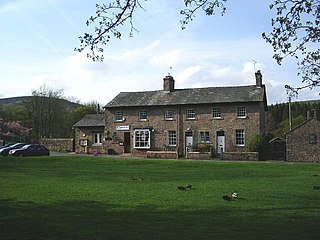
Dunsop Bridge is a village in the Borough of Ribble Valley, Lancashire, England, 9 miles (14 km) north-west of Clitheroe, 15 miles (24 km) south-east of Lancaster and 24.5 miles (39 km) west of Skipton. It is in the civil parish of Bowland Forest High. Historically, the village is part of the West Riding of Yorkshire, but was placed under the administration of Lancashire County Council on 1 April 1974.
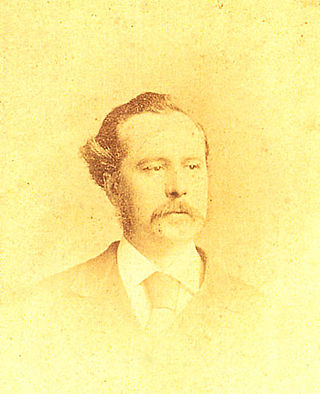
Edward Welby Pugin was an English architect, the eldest son of architect Augustus Welby Northmore Pugin and Louisa Barton and part of the Pugin & Pugin family of church architects. His father was an architect and designer of Neo-Gothic architecture, and after his death in 1852 Edward took up his successful practice. At the time of his own early death in 1875, Pugin had designed and completed more than one hundred Catholic churches.

The Roman Catholic Diocese of Lancaster is a Latin Church Roman Catholic diocese centred on Lancaster Cathedral in the city of Lancaster in Lancashire, England.
Brian Michael Noble was an English prelate who served in the Roman Catholic Church as the Bishop of Shrewsbury from 1995 to 2010.
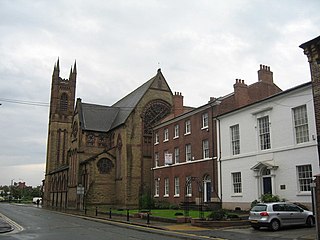
St Mary's Church, or St Mary's Priory, is in the town centre of Warrington, Cheshire, England. It is recorded in the National Heritage List for England as a designated Grade II listed building, and is an active Catholic church. The parish was established and served by Benedictine monks from Ampleforth Abbey, but following the withdrawal of Ampleforth Abbey from the parish in 2012, it was served by the priest from St Benedict's Church, Warrington. From November 2015, the church has been owned and served by priests from the Priestly Fraternity of Saint Peter (FSSP) as a shrine church dedicated to the celebration of the sacraments of the pre-Vatican II form of the Roman Rite. It is well known for the beauty and reverence of its liturgy.

Sacred Heart Church is a Roman Catholic church in Blackpool, Lancashire, England, on Talbot Road close to the town centre. It was the first Roman Catholic church built in Blackpool and has been designated a Grade II* listed building by English Heritage.

Lancashire is a county in North West England. In 1974 parts of the historic county were divided between Greater Manchester, Merseyside, Cheshire and Cumbria, and part of the West Riding of Yorkshire was transferred into the county, creating the non-metropolitan county of Lancashire. Together with the unitary authorities of Blackburn with Darwen and Blackpool it now forms the ceremonial county of Lancashire.
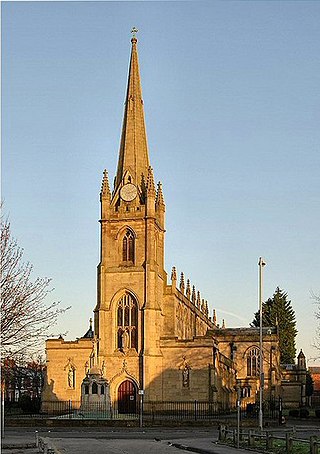
The Syro-Malabar Cathedral of St Alphonsa also known as St Ignatius Church is a Catholic cathedral of the Syro-Malabar rite in Preston, Lancashire. It is the cathedral of the Syro-Malabar Catholic Eparchy of Great Britain, and was previously under the Diocese of Lancaster. It is situated close to the Preston city centre, with the entrance on Meadow Street. The building was opened in 1836 and was the first church in Preston to have a spire.

St Francis of Assisi Church is a Roman Catholic Parish church in Birmingham. While the church is located between the Lozells and Hockley parts of the city, the parish covers most of Handsworth. It was founded in 1840, originally as a chapel in the nearby listed building, St. Mary's Convent designed by Augustus Pugin.

St Michael and St John the Evangelist Church is a Roman Catholic parish church in Clitheroe, Lancashire, England. It is situated on Lowergate road close to the centre of the town. It was endowed in 1799 by the Catholic philanthropist Thomas Weld and staffed by members of the Society of Jesus. When the original building became St Michael and St John's Catholic Primary School in 1850, the church moved next-door to the school. The church is recorded in the National Heritage List for England as a designated Grade II listed building.

Mount St Mary's Church or the Church of the Immaculate Virgin Mary is a Grade II* listed building and a redundant Roman Catholic church in Leeds, West Yorkshire, England. It was founded in 1851 and designed by Joseph Hansom, with extensions by Edward Pugin. It is next to Mount St Mary's Catholic High School, Leeds.
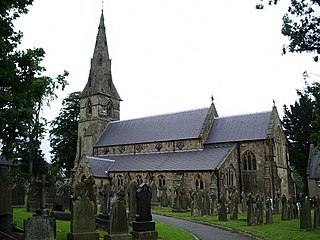
St John the Evangelist's Church is in Ribby Road, Kirkham, Lancashire, England. It is an active Roman Catholic parish church in the diocese of Lancaster. The church was designed by A. W. N. Pugin, and is recorded in the National Heritage List for England as a designated Grade II listed building.

St Anne's Church is a Roman Catholic Parish church in Blackburn, Lancashire, England. It was founded in 1848, built in 1926 and designed by the architectural firm of Hill, Sandy & Norris of Manchester, who were also behind the construction of St John the Baptist Church in Rochdale.

Paul Swarbrick is a Roman Catholic prelate, who has served as Bishop of Lancaster since 2018.
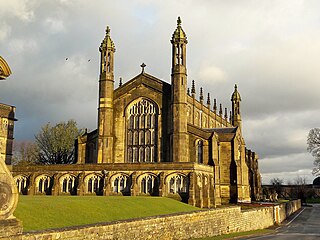
St Peter's Church is a Roman Catholic Parish Church in Stonyhurst. It is the parish church for Hurst Green, Lancashire and a chapel for Stonyhurst College. It was built from 1832 to 1835 and designed by Joseph John Scoles in the Gothic Revival style. It was founded by the Society of Jesus and has been served by Jesuit priests since. It is a Grade I listed building.

St Mary's Church is a Roman Catholic parish church in Stockton-on-Tees. It was built in 1842 and designed by Augustus Pugin in the Gothic Revival style. According to Historic England, the current building was first permanent Roman Catholic church to be built in Teesside since the Reformation. It is located in the town centre, on the corner of Norton Road and Major Street, with the A1305 road to the north of it. It is a Grade II listed building.

St Mary's Church is a Roman Catholic church in Morecambe, Lancashire, England. It is the first Catholic Church in Morecambe to be built after the Reformation. It is located on the corner of Lord Street and Matthias Street in the centre of the town. It was built in 1895 and designed by Pugin & Pugin in the Gothic Revival style.























